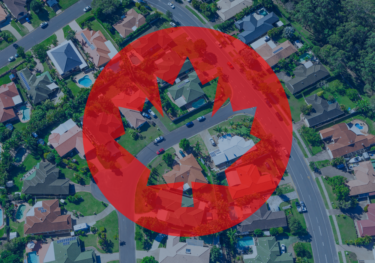Canada Up Close | 18 Apr 2024
More pain still to come from the mortgage payment shock | Canada Up Close

Callee Davis
Economist, Canada

Total mortgage payments surged after the Bank of Canada began aggressively hiking interest rates in early 2022.
In this month’s video, Callee Davis, Economist, discusses why we believe there is more pain still to come from the mortgage payment shock in Canada.

More pain still to come for Canada from the mortgage payment shock
Mortgage payments have soared since the Bank of Canada began aggressively hiking interest rates in early 2022, and there is more pain to come as borrowers continue to renew their mortgages this year.
Hi, I’m Callee Davis, Economist at Oxford Economics. Today I will be discussing why we believe there is more pain still to come from the mortgage payment shock in Canada. Total mortgage payments surged after the Bank of Canada began aggressively hiking interest rates in early 2022. Higher rates filtered through immediately to variable rate mortgages and to some fixed term mortgages during the past two years.
But around 82% of fixed rate mortgages with a term of five years or more that were acquired just before the central bank started hiking rates in March 2022, will see their interest payments rise during the next three years. Around 60% of mortgages with variable rate fixed principal payment terms that were acquired during the same period are also due to come up for renewal over the next three years.
These mortgages have been spared higher payments due to extended amortization periods, but they will face a mortgage payment shock at renewal. Even with interest rates expected to begin easing in H2 2024, we forecast total mortgage payments will increase by another 6% by the end of this year, and by 18% by the end of 2027. This will take their share of disposable incomes to a record high of 9.3% by mid 2025, which is up sharply from 7.2% in Q1 2022.
Low to medium income indebted households will bear the brunt of the mortgage payment shock because they have little spare income, excess savings or ability to take on more debt. Their total mortgage payments could rise by as much as C$4bn this year, which is around 0.5% of their current total nominal consumption. This will force them to cut discretionary spending or, in more dire cases, sell their homes.
A spending pullback by this group will have an impact on aggregate household outlays, seeing as they account for just under half of Canada’s total consumption. But this will be partially offset by higher income households, who are better positioned to cope with higher mortgage payments and maintain their current level of consumer spending.
Strong population growth will also support consumer spending this year. In total, this will help support a modest 0.5% rise in the volume of consumer spending this year, which is still much lower than the 1.7% growth recorded in 2023. Weaker consumption, which accounts for more than half of GDP, is a key driver of our recession forecast and we could see a period of deleveraging in coming years.
Related Services

Canadian Province and Metro Service
Data and forecasts for Canadian provinces and metropolitan areas.
Find Out More
Canada Macro Service
Comprehensive coverage of the Canadian economy, providing clients with all of the information they need to assess the impact of developments in the economy on their business.
Find Out More
Canada Provincial Territorial Model
A rigorous and comprehensive framework to develop forecasts, scenarios and impact analysis at the national, provincial and territorial levels.
Find Out More
City Climate Analysis
In-depth insights into the economic impacts of climate change and mitigation policies on cities and local economies throughout Europe, the US and Canada.
Find Out MoreTags:
